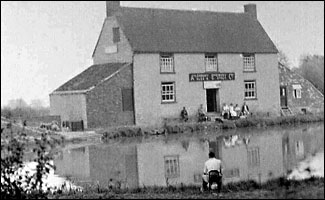![]()
The contents on this page remain on our website for informational purposes only.
Content on this page will not be reviewed or updated.
 |
|
 |
|
|
||||
|
Great Linford: Branch Canal
|
||||
|
||||
|
As early as 1793 the Grand Junction Canal Company had considered the idea of a branch canal from Great Linford to Newport Pagnell, but the plans did not begin to take a serious form until 1813, when a meeting was convened at Newport Pagnell to discuss the project. However, by now the Canal Company seemed less than keen, for apart from a monetary shortage they also held concerns regarding the increasing water leaks in the main canal between Fenny Stratford and Wolverton. Nevertheless the inhabitants and traders of Newport Pagnell pressed ahead, and at a public meeting, chaired by the local M.P., on August 20th 1813 they resolved to apply to Parliament for the necessary bill. A survey estimated the cost at around £12,000, and on June 17th 1814, Royal Assent for the Parliamentary Act was awarded ‘for making and maintaining a navigable canal.’ By December a contract had been awarded, and in January 1817 the new waterway opened, with tolls charged at 2s per ton on all goods excepting coal, manure and coke, which were separately levied. Leaving the Grand Junction Canal (later renamed the Grand Union Canal) by the Great Linford road bridge, the branch canal descended some fifty feet through a series of seven locks to Newport Pagnell, and at the Great Linford end featured a wide basin bordered by a busy wharf. Today the basin is still evident, and near to the old wharf lies the former Wharf Inn, which until recent years remained as a public house catering for the canal traffic. Whilst coal initially formed the greater part of the canal cargo, stone, manure, bricks and timber were also important, and for a while the waterway enjoyed a moderate success, although an extension to Olney was considered uneconomic. Then at the end of 1845 a proposal was made to lay a railway from the London to Birmingham line at Wolverton to Newport Pagnell (to continue on a curved progress to join the Bletchley to Bedford branch line at Ridgmont) and to ease the construction Robert Stephenson suggested taking over and draining the Great Linford to Newport Pagnell branch canal, such that a part of the track could be laid on the dry bed. Raising no objections, the local Canal Company agreed to sell for the sum of £14,230, and although by February 1846 negotiations with the railway company had reduced this amount to £10,000, opposition from the main Grand Junction Canal Company ensured that the deal did not go through. Then in 1862, encouraged by the proven success of the railways a new scheme for the branch line was proposed, and, despite objections from the Grand Junction Canal Company, authority was duly obtained from Parliament to close and sell the canal to a railway company for £9,000. Their intention was to lay the track on the dry canal bed, and with the Newport Pagnell Railway Act duly passed in 1863, the branch canal came to an end. A closing down sale took place at the Great Linford wharf on September 26th 1863, and so began Great Linford’s acquaintance with the railway - but that’s another story.
|
||||
|
|
||||
|
|
||||


